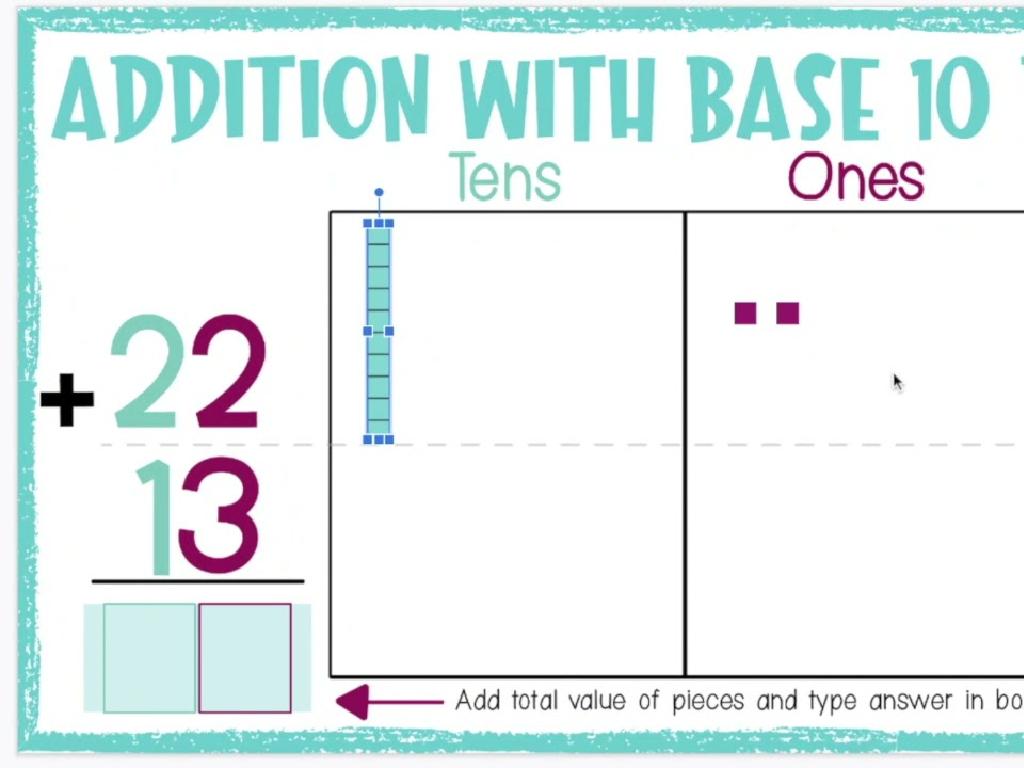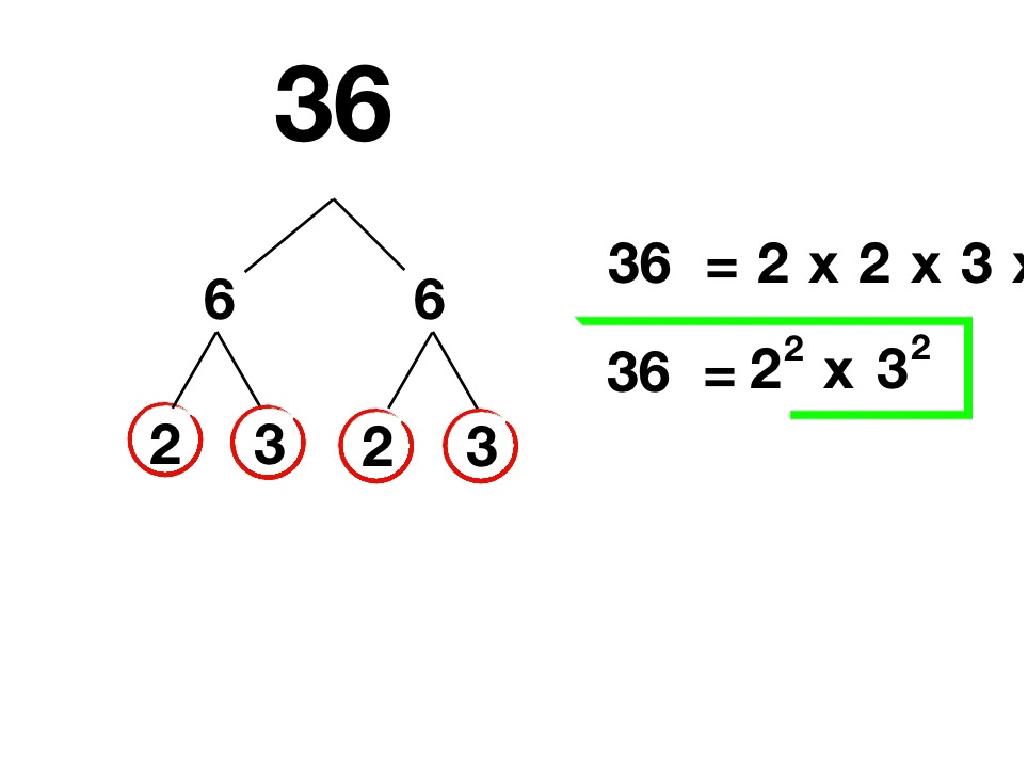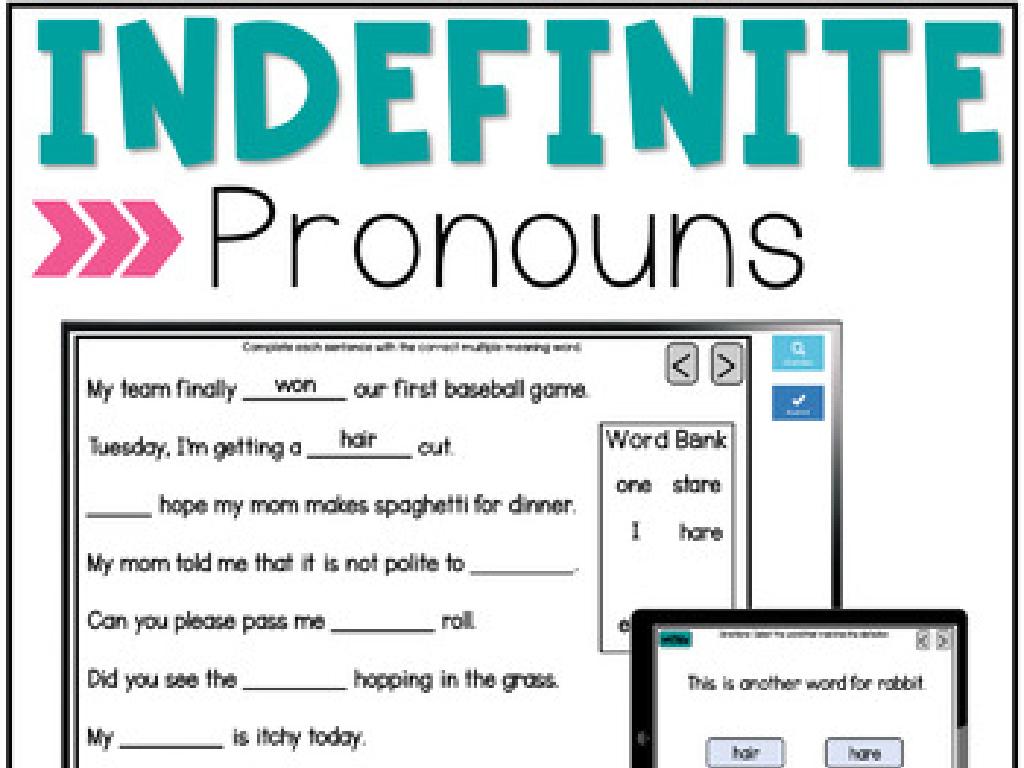Volume Of Rectangular Prisms Made Of Unit Cubes
Subject: Math
Grade: Fifth grade
Topic: Volume
Please LOG IN to download the presentation. Access is available to registered users only.
View More Content
Exploring Volume: Rectangular Prisms
– Volume measures 3D space
– It’s like how much water fits in a pool
– Rectangular prism properties
– A box shape with 6 flat faces
– Volume in daily life
– Used in filling containers, building
– Calculating volume with cubes
– Count cubes to find a prism’s volume
|
This slide introduces the concept of volume as a measure of three-dimensional space, which can be thought of as the amount of water that would fill a swimming pool. A rectangular prism is a box-shaped figure with six flat faces, all angles are right angles, and opposite faces are equal. Students will see how volume is relevant in everyday life, such as filling containers or in construction. Teach students to calculate the volume of a rectangular prism by counting unit cubes, which will help them understand volume in a tangible way. Use hands-on activities with physical cubes to reinforce the concept.
Exploring Volume with Unit Cubes
– Define a unit cube
– A unit cube is a cube with a side of one unit.
– Unit cubes build shapes
– Like building blocks, unit cubes combine to form 3D shapes.
– Count cubes for volume
– To find volume, count how many unit cubes fit inside the shape.
– Practice with examples
– Try finding the volume of a shape using unit cubes.
|
This slide introduces the concept of unit cubes and how they relate to understanding volume in three-dimensional shapes. A unit cube is the building block for measuring volume, with each side being one unit in length. By combining unit cubes, students can visualize the construction of larger shapes. To find the volume of a shape, students will count the total number of unit cubes that can fit inside without gaps or overlaps. Provide examples of different rectangular prisms made from unit cubes and guide students through counting the cubes to determine the volume. Encourage students to practice with real cubes or illustrations to reinforce the concept.
Calculating Volume of Rectangular Prisms
– Volume formula: V = l x w x h
– V represents volume, l is length, w is width, h is height
– Measure prism dimensions
– Use a ruler to find the length, width, and height in units
– Count unit cubes for volume
– Each cube represents 1 cubic unit; stack and count to find total volume
– Practice with real examples
– Apply formula to objects like boxes or building blocks
|
This slide introduces the concept of volume for rectangular prisms using the formula V = l x w x h, where V is volume, l is length, w is width, and h is height. Students should learn how to measure the dimensions of a prism using a ruler and understand that the volume is the number of unit cubes that can fit inside the prism. Encourage students to visualize stacking cubes to fill the prism completely. Provide real-world examples such as boxes or building blocks to help them apply the formula and reinforce the concept. During class, have students practice with different prisms and calculate volume using both methods: counting unit cubes and applying the formula.
Exploring Volume with Rectangular Prisms
– Find prisms in our environment
– Look around to spot box-shaped items like buildings, books, etc.
– Guess the volume of items
– Use unit cubes to estimate how many would fill a cereal box or a toy chest.
– Compare volumes of objects
– Which is larger: a shoebox or a lunchbox? Use volume to decide.
– Understanding real-life applications
|
This slide aims to help students recognize rectangular prisms in their surroundings and understand the concept of volume in a tangible way. Encourage students to think about objects they encounter daily that resemble rectangular prisms. Guide them to make educated guesses about the volume of these items by visualizing how many unit cubes could fit inside. Facilitate a discussion on comparing the volume of different objects to reinforce the concept of volume measurement. Emphasize the practicality of understanding volume in real-life scenarios, such as packing, storage, and shipping. Provide examples and encourage students to bring in measurements of objects from home for a hands-on activity in the next class.
Let’s Practice Together: Finding Volume
– Interactive example: Calculate volume
– Use unit cubes to fill a rectangular prism and count to find the volume.
– Step-by-step volume calculation
– Start with length, width, height, then multiply: Volume = length × width × height.
– Discuss the method in groups
– Talk about different strategies used to find the volume.
– Share your findings with the class
|
This slide is designed for an interactive class activity where students will engage in a hands-on example to calculate the volume of a rectangular prism using unit cubes. Provide a step-by-step guide to help them through the process, ensuring they understand how to determine length, width, and height, and then multiply these dimensions to find the volume. After the individual work, encourage students to discuss their approach in small groups, sharing any tips or tricks they discovered. Conclude the activity with a few students presenting their method and findings to the entire class. This will reinforce their understanding and allow them to learn from each other’s experiences.
Class Activity: Build Your Own Prism
– Gather unit cubes, rulers, graph paper
– Construct a rectangular prism
– Use the cubes to make a 3D rectangle
– Measure dimensions with ruler
– Length, width, height are needed
– Calculate prism volume
– Volume = length x width x height
|
This hands-on activity is designed to help students understand the concept of volume through a tactile experience. Provide each student with a set of unit cubes, rulers, and graph paper. Guide them to construct their own rectangular prism using the cubes, ensuring they understand how to arrange them in layers. Once the prism is built, students should use the rulers to measure the length, width, and height of their prism. After measuring, they will calculate the volume by multiplying these dimensions. Encourage students to record their findings and share with the class. Possible variations of the activity could include constructing prisms of different sizes, comparing volumes of prisms with the same footprint but different heights, or even calculating the volume of irregular shapes created by combining multiple prisms.
Homework and Next Steps: Exploring Volume
– Complete the Volume Worksheet
– Practice calculating volume with the provided worksheet.
– Next lesson: Volume of Irregular Shapes
– We’ll learn how to find the volume of shapes that aren’t rectangular.
– Bring Unit Cubes for hands-on learning
– We will use unit cubes to build and explore volumes in class.
– Practice makes perfect!
|
The homework assignment reinforces today’s lesson on the volume of rectangular prisms and prepares students for the next topic. The worksheet should include a variety of problems, some of which require students to count unit cubes and others to apply the volume formula (length x width x height). The next lesson will challenge students to apply their understanding of volume to irregular shapes, which may be composed of several rectangular prisms. Remind students to bring unit cubes to the next class for a hands-on activity that will help solidify their understanding of volume. Encourage students to practice regularly as understanding volume is a fundamental skill in mathematics.





